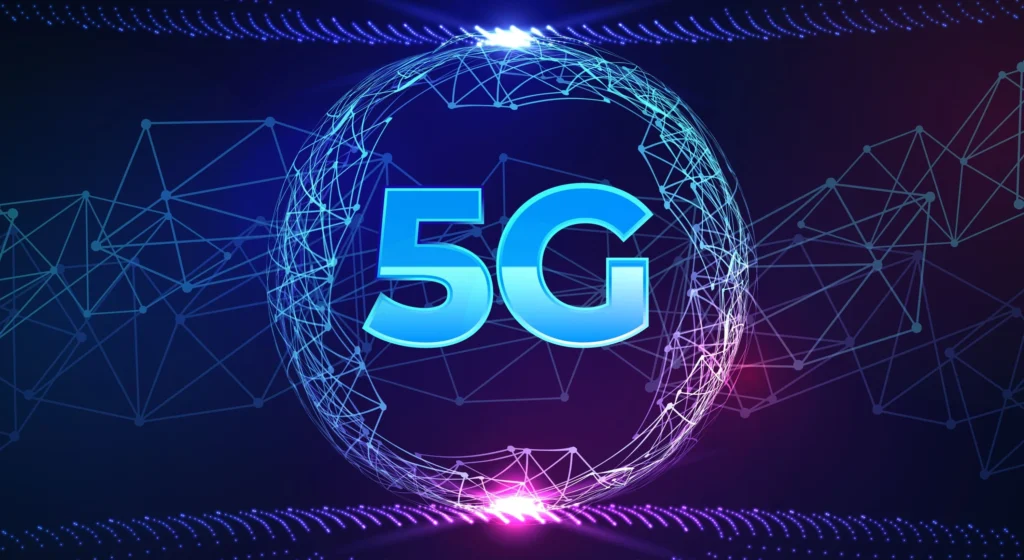5G networks are poised to revolutionize the way we connect and communicate, offering unprecedented speed, reliability, and connectivity. With the potential to significantly impact various industries, 5G networks are being hailed as The Next Big Thing in Connectivity. This next generation of wireless technology promises to enable faster download and upload speeds, improved coverage, and more stable connections, making it a game changer for businesses and consumers alike. As the demand for high-speed, low-latency connectivity continues to grow, 5G networks are set to play a pivotal role in shaping the future of communication and technology.
One of the most intriguing aspects of 5G networks is their potential to support the Internet of Things (IoT) on a massive scale, enabling seamless connectivity for a wide range of devices and applications. Additionally, the ultra-low latency of 5G networks has the potential to revolutionize industries such as healthcare, transportation, and manufacturing, by enabling real-time remote monitoring and control. Moreover, the increased capacity of 5G networks could pave the way for new innovations in virtual and augmented reality, as well as autonomous vehicles and smart cities. As the deployment of 5G networks continues to expand, the possibilities for connectivity and innovation are virtually limitless.
What is 5G Network?
5G network is the fifth generation of mobile internet connectivity, offering faster speeds and more reliable connections on smartphones and other devices than ever before. It is designed to meet the growing demand for high-speed, high-capacity wireless communication and to support the future of the Internet of Things (IoT) and other advanced technologies.
5G networks use a range of new technologies, including advanced antenna systems and higher frequency bands, to deliver these faster speeds and lower latency. With 5G, users can expect to download and upload data at much faster rates, stream high-quality video with minimal buffering, and experience more responsive gaming and virtual reality experiences.
How Does 5G Network Work?
5G networks operate on three different spectrum bands: low, mid, and high. Low-band spectrum offers the widest coverage area but with slower speeds, while high-band spectrum, also known as millimeter wave, provides the fastest speeds but with limited coverage. Mid-band spectrum strikes a balance between coverage and speed.
5G networks also utilize technologies such as massive MIMO (Multiple Input, Multiple Output) and beamforming to improve network capacity and coverage. Massive MIMO uses multiple antennas to transmit and receive data, while beamforming focuses the signal directly towards the user, improving the signal quality and reducing interference.
The Benefits of 5G Network
5G network offers several benefits, including significantly faster download and upload speeds, lower latency, and improved connectivity for a large number of devices in a given area. This can enable a wide range of applications, from autonomous vehicles and smart cities to telemedicine and immersive entertainment experiences.
Additionally, 5G network can support the growing demand for data-intensive activities, such as 4K video streaming, virtual reality, and augmented reality, without sacrificing performance. It also has the potential to revolutionize industries by enabling new use cases and applications that require ultra-reliable and low-latency communication.
Challenges and Considerations for 5G Network Implementation
While 5G network offers many benefits, there are also challenges and considerations that come with its implementation. One of the main challenges is the need for extensive infrastructure upgrades, including the deployment of new base stations and small cells to support the higher frequency bands used in 5G.
Another consideration is the potential impact of 5G on existing technologies and industries, as well as the need for spectrum allocation and regulatory policies to support the deployment of 5G networks. Additionally, there are concerns about security and privacy in 5G networks, as the increased connectivity and reliance on wireless communication can create new vulnerabilities.
5G Network and the Internet of Things (IoT)
5G network is expected to play a crucial role in the development and expansion of the Internet of Things (IoT). With its high-speed, low-latency connectivity, 5G can support a massive number of IoT devices and enable real-time data processing and communication. This can lead to the creation of smart cities, intelligent transportation systems, and connected industrial machinery, among other applications.
Furthermore, 5G can enable new IoT use cases that require reliable and responsive communication, such as remote monitoring, industrial automation, and healthcare applications. Its ability to support a large number of devices in a given area can also lead to more efficient and interconnected IoT ecosystems.
5G Network and Edge Computing
5G network and edge computing are closely intertwined, as edge computing can help to address the latency and bandwidth requirements of 5G applications. By bringing computing resources closer to the point of data generation and consumption, edge computing can reduce the need to send data back and forth to centralized data centers, improving response times and overall performance.
With 5G network and edge computing combined, applications that require real-time data processing, such as autonomous vehicles and augmented reality, can benefit from the low-latency connectivity and localized computing resources. This can lead to the development of innovative and immersive experiences that were not possible with previous generations of mobile connectivity.
5G Network and Telemedicine
5G network has the potential to revolutionize the field of telemedicine by enabling high-quality, real-time video consultations and remote patient monitoring. With its low-latency connectivity and high-speed data transmission, 5G can support the delivery of medical services in areas where access to healthcare is limited, as well as enable new healthcare applications and devices.
Additionally, 5G network can facilitate the use of advanced technologies, such as augmented reality and virtual reality, for medical training and surgical procedures. It can also support the transfer of large medical imaging files, such as MRIs and CT scans, without compromising on image quality or speed, leading to more efficient and effective healthcare delivery.
5G Network and Smart Cities
5G network is expected to play a key role in the development of smart cities, where interconnected devices and sensors can gather and analyze data to improve the efficiency of urban infrastructure and services. With its high-speed, low-latency connectivity, 5G can support a wide range of smart city applications, including traffic management, energy distribution, and public safety.
Furthermore, 5G network can enable the deployment of connected infrastructure, such as smart streetlights, environmental sensors, and intelligent transportation systems, that can help cities reduce energy consumption, improve air quality, and enhance overall quality of life for residents. It can also support the development of new urban services and applications that rely on real-time data processing and communication.
| 5G Networks | The Next Big Thing in Connectivity |
|---|---|
| What is it? | 5G is the fifth generation of cellular network technology, designed to increase speed, reduce latency, and improve flexibility of wireless services. |
| Benefits | Enhanced mobile broadband, massive machine-type communications, and ultra-reliable low latency communications are among the key benefits of 5G networks. |
| Applications | 5G networks are expected to revolutionize industries such as healthcare, transportation, and manufacturing, and enable advancements in virtual reality, augmented reality, and Internet of Things (IoT). |
| Challenges | Deployment costs, infrastructure requirements, and security concerns are some of the challenges associated with the rollout of 5G networks. |
| Future Outlook | 5G networks are poised to become the backbone of the digital economy, powering innovations and transforming the way we connect and communicate. |
5G Networks The Next Big Thing in Connectivity
5G networks represent the next leap in wireless technology, offering faster speeds, lower latency, and greater capacity. With the potential to revolutionize various industries and enable new applications, 5G is expected to play a crucial role in shaping the future of connectivity and communication. However, challenges such as deployment costs and security concerns need to be addressed for the widespread adoption of 5G networks.



